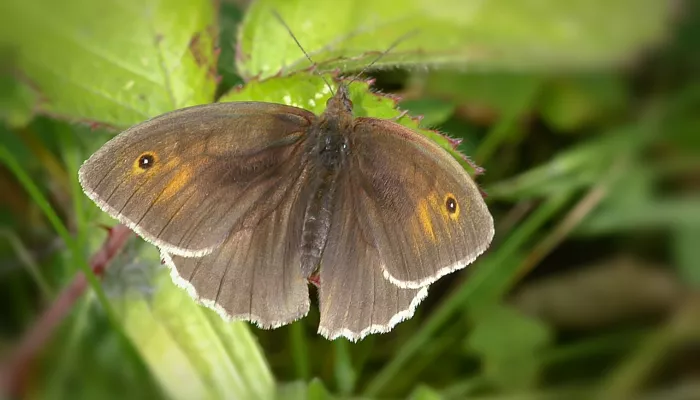About
The medium-sized meadow brown is one of the commonest grassland butterflies, on the wing in the summer, from June to September. It also occurs in parks, gardens and cemeteries. It even flies in dull weather when other butterflies are inactive. Adults can be seen in large numbers, flying low over the grass and flowers. Caterpillars feed on a variety of grasses such as fescues, bents and meadow-grasses.How to identify
The meadow brown is mainly brown with washed-out orange patches on the forewings. The best way to identify the 'brown' butterflies is by looking at the eyespots on their wings. The combination of its relatively large size, orange patches on the forewings only, one eyespot on the forewing and none at all on the hindwings, is unique to the meadow brown. The meadow brown also has only one small white 'pupil' in the eyespots, instead of two like the gatekeeper.Did you know?
Males are much more active than females, spending their time patrolling and investigating other butterflies that come near their perches. Unless feeding or egg-laying, females spend much of their time sat on the ground, hidden among the grass.The Wildlife Trusts manage many grassland and woodland habitats sympathetically for the benefit of all kinds of butterflies, including the meadow brown. Careful grazing with traditional breeds, hay-cutting at the right time, scrub clearance and coppicing are just some of the ways grasslands and woodlands are kept in good condition - supporting invertebrates and, in turn, the larger animals that prey on them.

